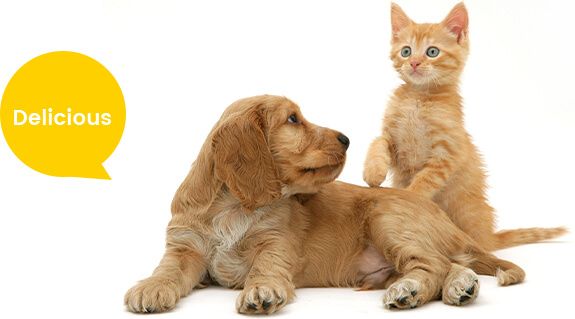
Want to hear from us?
Sign up to receive our latest email news, offers and updates.
News and Events
August 17, 2022As one of the six major nutrients, the importance of fat is self-evident for the role of organisms, especially animals. Canine and cat mammals also need fat in their growth process, and only when the fat content in the food is appropriate, it is beneficial to the growth of dogs and cats.
Excessive fat can cause obesity, and serious nutritional and metabolic diseases, such as diabetes, etc. Although these diseases may also be caused by other reasons, such as genetics and other problems, excessive accumulation of energy can also cause similar symptoms. Too little fat is also not conducive to the health of dogs and cats. The normal growth of pets requires the use of fatty acids in fat to synthesize special substances such as DHA (docosahexaenoic acid), AA (arachidonic acid), and they also need to use their own The oxidative decomposition of fat, the absorption of energy in fat.
Compared with carbohydrates and proteins, fat can provide the highest total energy. Although fat is an essential nutrient for animals, different types of animals have different requirements for different types of fat. For dogs and cats, researches mainly focus on PUFAs such as LA (linoleic acid), ALA (α-linolenic acid), AA (arachidonic acid) and DHA (docosahexaenoic acid). saturated fatty acid).
The relationship between fat and fatty acids
Fat is a type of lipid that is present in the diet by combining free fatty acids with glycerol. When the food is eaten by dogs and cats, the macromolecular fat undergoes a series of hydrolysis, hydrogenation, and decomposes into small molecules of fatty acids and glycerol. These small molecules are oxidized or re-synthesized in specific parts of the dog and cat's body. To be precise, the dog and cat's feed is not for ingesting fat itself, but to use the energy in fat and the small molecules that make up fat.
source of fatty acids
Feed fats can be derived from lipids stored in terrestrial and aquatic animals and oils stored in plant seeds. Most fatty acids are synthesized from carbohydrates. Therefore, the lipids stored in the body are mainly saturated fatty acids and monounsaturated fatty acids.
When lipids contain more linoleic acid (LA), such as soybean oil, corn oil, etc., or linolenic acid (ALA), such as linseed oil, there will be higher levels of polyunsaturated fatty acids in tissue lipids . Ruminants are a special case because of the hydrogenation of unsaturated fatty acids by microorganisms in their bodies before they are absorbed. When ruminants were fed high levels of unprotected highly polyunsaturated fatty acids, there was only a small change in the fatty acid composition of adipose tissue, and the presence of trans fatty acids was also found in ruminants. Compared with terrestrial mammals, aquatic organisms are richer in n-3 fatty acids.
Fats and oils obtained from plants are mainly composed of triglycerides. The leaves of terrestrial plants contain a large amount of linolenic acid. However, the total content of lipids in plant raw materials is low, and generally cannot be used as the main source of fat in dog and cat diets. Seed oils may be rich in 18 carbon (C) n-6 and n-3 fatty acids, and specific fatty acids have specific seed sources.
Molecular structure of several fatty acids and their nutritional effects on animals
1. Linoleic acid (LA Figure 1)
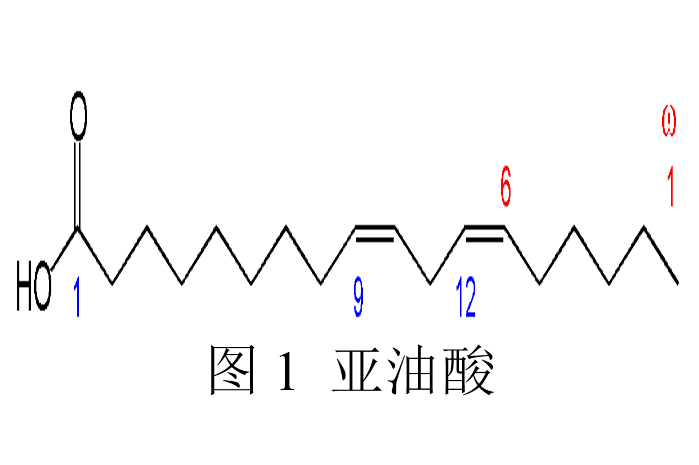
Linoleic acid is an omega-6 fatty acid containing two double bonds, obtained in plants from the desaturation of oleic acid. Due to the limited ability of mammals to desaturate, they cannot introduce double bonds on carbon atoms other than C-9, while plant cells do not have this limitation, so the double bond at the 12-position of linoleic acid cannot be introduced in animals, only Can only be introduced in plant cells. Therefore, linoleic acid is called an essential fatty acid, which must be obtained from food and cannot be synthesized or synthesized very little by itself.
2. Alpha-linolenic acid (Alpha-linolenic acid, ALA Figure 2)
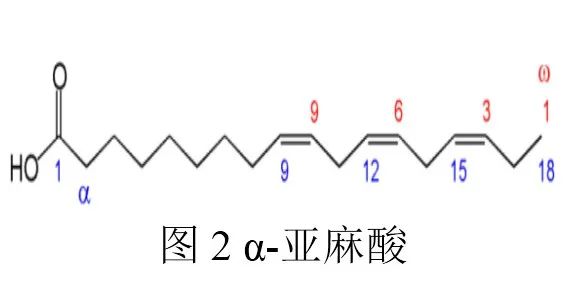
The main function of ALA is that it is a precursor for the synthesis of n-3 polyunsaturated DHA (docosahexaenoic acid).
3. Arachidonic acid (AA Figure 3)
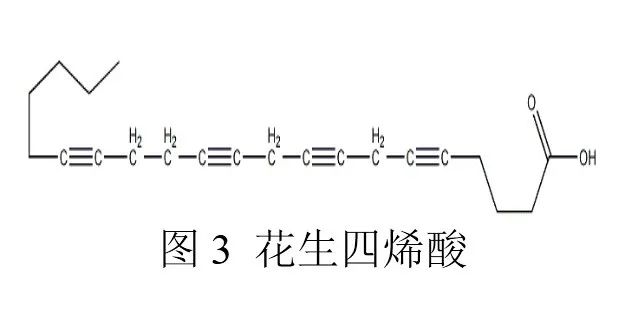
Eicosatetraenoic acid, also known as arachidonic acid, is an omega-6 long-chain polyunsaturated fatty acid. AA is an essential fatty acid in early childhood, and the lack of AA may have serious adverse effects on the development of animal tissues and organs, especially the development of the brain and nervous system. After growth, animals can be converted from essential fatty acids linoleic acid and linolenic acid, so they belong to semi-essential fatty acids.
4. Docosahexaenoic acid (docosahexenoic acid, DHA Figure 4)
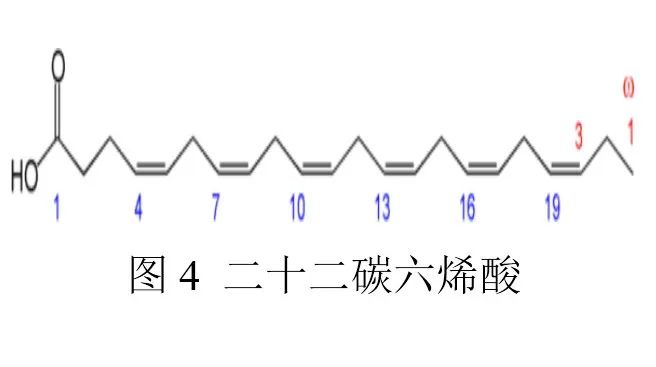
DHA, docosahexaenoic acid, is a polyunsaturated fatty acid that is very important to animals and humans, and belongs to an important member of the omega-3 unsaturated fatty acid family. Mainly derived from aquatic organisms, fish and seaweed. However, the content of EPA (eicosapentaenoic acid) in fish fat is too high, so that the proportion of DHA is too low, which is quite different from breast milk, which does not meet the physiological needs of puppies and cats; Although the content is relatively high, it does not contain AA that has an important role in brain development, and too much EPA will inhibit the effect of AA.
Essential Fatty Acids for Pets
Both n-6 and n-3 fatty acids are required by dogs and cats. In some cases, LA and ALA can be used to meet requirements, with the exception of some important fatty acids, depending on the physiological state of the animal. Therefore, some fatty acids are conditionally essential fatty acids in some cases.
For dogs and cats, the most needed EFAs are n-6 fatty acids in the form of LA. A moderate supply of AA is also necessary in certain situations, such as growing and breeding female cats. Early research suggests that in puppies and young dogs, EFA deficiency can be cured when 2% to 6% of energy is provided by LA or AA. When the metabolizable energy concentration was 4.0kcal/g DM (dry matter mass), although AA also exhibited activity, dogs could synthesize sufficient amounts of AA with LA. Therefore, only LA is necessary for dogs. For cats, dietary LA can also provide sufficient essential n-6 fatty acids for maintenance and pregnancy. However, the maintenance of normal pregnancy and neonatal growth and development in cats requires a pre-supply of long-chain n-6 fatty acid-AA.
With regard to the n-3 fatty acid ALA, definitive studies on its essentiality in dogs and cats have not been conducted. However, studies in other animals have shown that giving small amounts of ALA to adult dogs can help with health, cell functioning, and cell function. Dogs and cats can convert ALA to EPA, but it is difficult to convert it to DHA. However, based on studies in other animals, the diversity of transformations has led to the observed transformation of ALA to DHA in many individuals. Because the requirement is small, the conversion of ALA can satisfy the maintenance requirement of long-chain n-3PUFAs in adult cats
If you want to know more about dog treats ,cat treats ,dental dog snacks and cat snacks ,pls feel freely to contact me .I am Doris from Tai'an Chaotai Pet Products Co.,LTD .

Want to hear from us?
Sign up to receive our latest email news, offers and updates.
